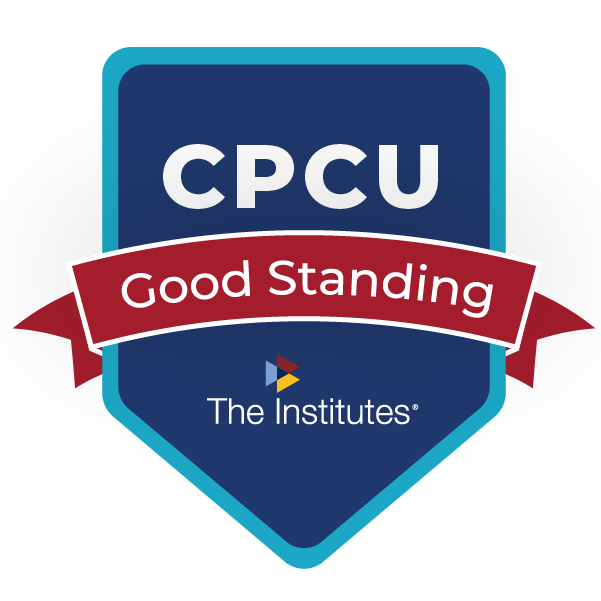Consumer Reports: Artificial hips never tested
Recalled DePuy ASR hips among devices untested
March 29, 2012 – In its upcoming May edition, Consumer Reports presents the results of its investigation which calls into question the current process of medical device regulation that their advocacy wing, Consumers Union, believes fails to “protect patients from harm.”
Entitled “CR Investigates: Dangerous medical devices,” CR sheds light on the process involved in bringing medical devices to market in the United States.
 For those specifically interested in the now-recalled DePuy ASR artificial hip implants, the report features compelling testimony from an orthopedic surgeon who personally suffered from the ill-effects of the DePuy ASR hip implant device. Stephen Tower, MD was “injured by the same artificial hip he implanted in patients.”
For those specifically interested in the now-recalled DePuy ASR artificial hip implants, the report features compelling testimony from an orthopedic surgeon who personally suffered from the ill-effects of the DePuy ASR hip implant device. Stephen Tower, MD was “injured by the same artificial hip he implanted in patients.”
A number of lawsuits have unfolded as a result of allegations that the DePuy ASR hip implant devices were defective. Litigation is ongoing and our firm remains committed to following this matter closely as it progresses.
Patients who may eventually be anticipating negotiated settlements stemming from their lawsuits are encouraged to familiarize themselves with the advantages of settling with a structured settlement. To watch a brief video on the topic, please visit our firm’s sister site at:
Call us for additional information about the advantages of settling your lawsuit with a structured settlement. Our free consultations are designed to help you make an informed choice about your financial future.
Posted: March 29, 2012 | Category: Articles, Blog, DePuy ASR Hip Recall, Structured Settlements | Comments Off on Consumer Reports: Artificial hips never tested
College Affordability Improves
“I believe that we parents must encourage our children to become educated, so they can get into a good college we cannot afford.”
– Dave Barry –
In a classic example of supply-and-demand and in response to the realities of an economy that has left many people lacking the wherewithal to meet the post-secondary educational needs of their offspring, some colleges are getting creative in an effort to attract more students.
 In his article “Colleges slashing tuition, offering 3-year degrees,” columnist Blake Ellis, writing for CNNMoney, cites examples of the “extreme measures” some institutions of higher learning are taking to increase the student body head count. Among them:
In his article “Colleges slashing tuition, offering 3-year degrees,” columnist Blake Ellis, writing for CNNMoney, cites examples of the “extreme measures” some institutions of higher learning are taking to increase the student body head count. Among them:
-
Cutting tuition by double digits
-
Freezing tuition hikes
-
Offering three-year degree programs
-
Offiering four-year graduation guarantees
While not all halls of ivy are embracing this approach to making a college degree more affordable, this is certainly welcome news for anyone looking to pursue higher education.
Those settling personal injury claims frequently arrange to have their settlement proceeds paid via a structured settlement designed to coincide with anticipated college costs for themselves, their children or grandchildren.
Posted: March 22, 2012 | Category: Articles, Blog, Structured Settlements | Comments Off on College Affordability Improves
Pro-Bowl QB Facing Financial Ruin
Mark Brunell’s Career Earnings of $50 Million . . . Gone!
March 9, 2012 – With the NFL Scouting Combine recently concluded and Draft Day fast approaching, many college football players, no doubt giddy with anticipation, will soon be eagerly awaiting that life-changing phone call from an NFL team which will hopefully set them on the path to stardom and financial independence.
A select few will sign contracts worth millions upon millions of dollars they could only dream about only a few years earlier.
Many more will sign less bountiful, but still very lucrative, contracts commensurate with their talent and market value.
The lucky ones who remain healthy will parlay their talent into long NFL careers that will pay them an accumulated sum of money designed to ensure a lifetime of prosperity.
But for one such player who has “been there, done that,” the end result is shaping up to be far different than planned.
According to “Jets Quarterback Mark Brunell’s Catastrophic Financial Path,” the three-time Pro Bowler “blew all his money with lousy investments into nine businesses.” Bankruptcy court filings reveal his plans to begin a $60,000 per year job as a medical sales rep once his playing days come to an end.
By all accounts, Mark Brunell is a great guy with a heart of gold and tremendous work ethic. But his tale of woe is proof that neither these qualities nor athletic prowess on the gridiron assures anyone success with money matters.
Problem Not Isolated to NFL Players
Even though a disproportionately high percentage of former NFL players end up “bankrupt, divorced or unemployed” according to ex-Green Bay Packer Ken Ruettgers who helps retired players who are down and out, the problem is not unique to this demographic.
A comprehensive study of personal injury plaintiffs who reject structured settlement offers and accept cash settlements instead does not exist; however, stories about people who spend their settlements faster than anticipated abound.
Mark Brunell’s story is certainly not a happy one. But at least he is young and can yet recover from his misfortune. When plaintiffs are anticipating large personal injury settlements, it’s usually because their ability to support themselves in the future has been seriously compromised.
They cannot afford to take risks!
For this reason, a structured settlement should serve as the foundation of any individual’s post-settlement financial planning strategy. It affords them the BEST opportunity to cost-effectively guarantee they will not outlive their money and end up penniless.
In its pamphlet, “Structured Settlements: Your Future. Guaranteed,” the National Structured Settlements Trade Association highlights several of the unique advantages structured settlements offer.
Retirees, Too, Benefit From Lifetime Income
In addition to personal injury plaintiffs, soon-to-be retirees looking to convert their life savings into guaranteed, secure cash flows should look to lifetime annuities which are the most cost-effective and least risky asset class for generating guaranteed retirement income for life, according to the scholarly work of two Fellows of the Wharton Financial Institutions Center in their article Rational Decumulation.
Let Us Help
Whether you’re in need of structured settlement expertise or seeking to roll-over your 401(k) or IRA, we can help. As specialists in offering financial solutions with your long-term financial security in mind, we’re here to help.
Thank you for the opportunity to be of service!
Posted: March 9, 2012 | Category: Articles, Blog, Retirement, Structured Settlements | Comments Off on Pro-Bowl QB Facing Financial Ruin
FDA Warned DePuy of ASR Hip Problems
A Full Year Before World Wide Recall
The New York Times reports that an executive for DePuy Orthopaedics, a subsidiary of Johnson & Johnson, sent an email to top executives of the company about the U. S. Food and Drug Administration’s unwillingness to approve one of the metal-on-metal artificial hips it manufactured because “a significant number of revisions” were needed compared to a control group.
 DePuy ASR artificial hips were recalled in August of 2010.
DePuy ASR artificial hips were recalled in August of 2010.
Despite DePuy’s offer of assistance to patients impacted by the recall (they have an entire website dedicated to the effort), attorneys around the country have filed lawsuits against the medical device maker.
Our firm is uniquely positioned to serve as a resource to patients affected by the DePuy ASR recall and the attorneys who represent them. For an informational video on why our firm is following this news so closely and to learn how we may be able to help, please visit:
We continue to monitor this on-going situation and look forward to being of service. Please let us know how we can help you.
Posted: February 26, 2012 | Category: Articles, Blog, DePuy ASR Hip Recall, Structured Settlements | Comments Off on FDA Warned DePuy of ASR Hip Problems
Google’s Most Expensive Adword
“Structured Settlements”
That’s right!
The phrase “structured settlements” is the most expensive Google Adword in the solar system according to Harvard behavioral economist Sendhil Mullainathan.
On January 31, 2012, National Public Radio’s Marketplace segment featured a revealing conversation with Professor Mullainathan entitled “How Google searches are leading economic indicators.”
What is a structured settlement?
In a few words, a structured settlement is a method of compensation for a personal, physical injury claim whereby the aggrieved party receives his/her settlement over time as opposed to a single lump sum.
More simply, if it’s not a lump sum, it’s a structured settlement.
A structured settlement can be an excellent claims resolution option for everyone involved since the parties can match future dollars with future needs and any negotiated settlement can be specifically tailored to the injured party’s unique situation.
And because all future payments are 100% income tax-free if properly implemented by a licensed, appointed structured settlement expert specializing in these types of transactions, structured settlements continue to be tremendously popular with claimants, parents, courts, plaintiff attorneys, claims professionals, the United States Government and numerous disability advocacy groups.
The Finn Financial Group happens to be one such firm specializing in these transactions.
What is NOT a structured settlement?
Almost everything you see on the Internet when you do a Google search for “structured settlements.”
Over the years, the phrase “structured settlement” has lost its original meaning in the eyes of the public due to a secondary market that has emerged blurring the lines between what a structured settlement is and what a “factored” structured settlement is.
Without going into an inordinate amount of detail, there are companies who buy recipients’ structured settlements rights “at some ridiculous discount” according to Prof. Mullainathan and then re-package those payment rights and sell them to investors for a profit.
The Finn Financial Group does not buy structured settlement rights nor does it sell “re-packaged structured settlements.”
What is a Google Adword?
For a price, businesses can pay to have certain words and phrases rise to the top of the Google search engine. Every time someone clicks on that website or Adword, Google makes money.
Supply and demand causes certain words and phrases to be more expensive than others. These sites are easily distinguishable from the non-paying sites because they are highlighted at the top of Google page one.
Depending on the popularity of the topic, the price of Adwords may rise or fall.
Dr. Mullainathan maintains the popularity of Adwords can be used to gauge what’s going on in the economy. Hence the term, leading economic indicators and the subject of the interview.
The Popularity of “Structured Settlements”
Which brings us full circle to the topic at hand.
As of yesterday, it costs $50.00 per click to buy “structured settlements” as an Adword, the most expensive one found to date by Dr. Mullainathan.
That’s $50.00 per click whether or not anything is ever purchased.
(Dr. Mullainathan and interviewer Kai Ryssdal even have some fun discussing what might happen if a bunch of people simply started clicking on these sites with no intention to purchase or sell anything)
Summary
Structured Settlements Are Leading The Way
In a major, if very odd and roundabout way, this completely validates the structured settlements industry.
For those currently receiving structured settlement benefits or those considering whether or not a structured settlement is a wise choice, you might want to ask yourself this:
“If someone is willing to pay this much money for a simple Adword to get their hands on my structured settlement, doesn’t that mean these things are really valuable and don’t they probably make a lot of money off of me?”
We believe the answer is a resounding “Yes.”
And just like it would never make sense to sell any asset below market value, clients are urged to think long and hard before forfeiting their valuable structured settlement rights.
Caveat vendor!
Posted: February 1, 2012 | Category: Articles, Blog | Comments Off on Google’s Most Expensive Adword
NYT: DePuy Recall Leads to $3 Billion Charge for Parent Company
January 25, 2012 – Johnson & Johnson, parent company of DePuy Orthopedics, maker of the since recalled metal-on-metal ASR artificial hip systems, recently took quarterly charges of more than $3.0 Billion according to the New York Times.
As a structured settlement company with a personal interest in the litigation that has developed in light of problems associated with certain artificial hips, we have great interest in assisting those who are pursuing legal remedy for products liability lawsuits stemming from the hip recall.
For those affected, we have established a special website dedicated to the matter and encourage all prospective clients and their representatives to visit us there. Please visit:
We continue to follow the DePuy hip recall matter with great personal and professional interest and look forward to being of service to you. Please let us know how we can help.
Posted: January 25, 2012 | Category: Articles, Blog, DePuy ASR Hip Recall, Structured Settlements | Comments Off on NYT: DePuy Recall Leads to $3 Billion Charge for Parent Company
Treasury Says “No” to Single Claimant QSF Request
January 20, 2012
Treasury Issues Final Regulations Under 104(a)(2)
Physical Injury Damages Exclusion
Internal Revenue Code Section 104(a)(2) is the foundation upon which structured settlements, which provide guaranteed future periodic payments on an income tax-free basis for personal, physical injury claimants, is built.
On January 20, 2012, Treasury issued its FINAL regulations under the code.
And while they didn’t actually use the words I’ve chosen for this newsletter’s headline above, their persistent refusal to act on the request reinforces the structured settlement industry’s long-standing consensus opinion on the topic:
Single Claimant Qualified Settlement Funds (QSFs) conflict
with the spirit of the original intent of the code.
What is a Qualified Settlement Fund?
In non-legal terms, IRC Section 468B is a section of the tax code that permits defendants to settle a claim when (typically) there are multiple defendants and/or claimants settling for an agreed sum but specific allocations are yet to be determined and/or defendant(s) need(s) to pay part of their obligation at some point in the future.
It addresses, among other things, timing of deductions.
When proper steps are followed (court order required, etc.), it permits the defendant to settle the case, pay the money owed (or give it time to arrange funds necessary to meet its obligation) and be done with the file. A 468B Trust, or Qualified Settlement Fund (QSF), “stands in” for the settling defendant(s) and permits closure and certainty for the defendant.
Once this step is completed, the competing interests for the settlement dollars agreed to can proceed unencumbered by any defense intervention.
A QSF can be an excellent settlement tool for certain classes of cases. Mass torts involving a large number of plaintiffs can be perfect candidates for QSFs. In these instances, allocations can be arranged, plaintiffs have time to explore their post-settlement financial options, attorneys can be paid, liens can be resolved, etc. all in the time needed to accomplish these ends.
An exceptionally small minority of structured settlement practitioners believe the Code applies to single claimant transactions and asked, on more than one occasion, the Internal Revenue Service for clarity on the important doctrines of economic performance and constructive receipt.
The IRS has repeatedly chosen to pass on the request as they did again here citing that it was beyond the scope of the regulations.
Where We Stand
Our firm does NOT support the use of structured settlements flowing from a single claimant QSF for a variety of reasons. Among them:
- Economic Benefit Most likely Triggered: While this may be debated by some in our industry, we don’t care to expose our clients to unnecessary risk;
- Limited Structured Settlement Options: The vast majority of life markets offering structured settlements steadfastly refuse to accept a structured settlement funded by a single claimant QSF. This seriously limits a plaintiff’s choice;
- We Don’t Push the Envelope with a Client’s Future: We prefer to stick with the tried and true. Properly crafted structured settlements, arranged in cooperation with all settling parties and their representatives, will normally achieve the best outcome;
- Time Value of Money: Everything else being equal, funding a structured settlement annuity earlier rather than later puts more money in the client’s pocket;
- It’s Unnecessary: Implementation of a QSF requires several court approval processes and usually involves trust management fees and other costs which can erode the plaintiff’s settlement. All can be accomplished more easily and more cost effectively without the QSF.
Also
Lest readers think we missed other important matters address in the regulations, there are two other areas upon which the IRS opined:
- Treasury DID NOT ADOPT commentators’ requests to, among other things, define certain personal injuries as “physical” which would unequivocally qualify them for income tax-free treatment. On this particular point, we are disappointed because it could have possibly clarified the tax-treatment of damages paid to exonerated prisoners among other classes of claimants; and,
- Treasury DID NOT ADOPT one commentator’s request that elimination of the “tort like” test that has long been required in order for damages to flow tax-free to the plaintiff, would create confusion. However, in this instance, not adopting was viewed as a plus since it broadens the scope of cases which may be eligible for special tax treatment. The impact of this decision and its impact on the structured settlements remains to be seen.
If you have any questions on any of this or any other topic involving structured settlements, please don’t hesitate to call. This was a long newsletter but we felt it was important enough to share with those who trust us to keep them abreast of important developments that impact their practices.
Thank you for the continued opportunity to be of service and best wishes for continued Struccess!
Posted: January 25, 2012 | Category: Articles, Blog, Newsletter, Structured Settlements | Comments Off on Treasury Says “No” to Single Claimant QSF Request
Why You Should Consider a “Personal Pension”
Because Your Longevity Risk is Increasing, That’s Why!
With apologies to our younger readers, remember the 1977 Dannon commercial that linked the high centenarian population of then-Soviet Georgia to eating yogurt?
What a difference a generation makes!
When Congress passed the Social Security Act in 1935, average life expectancy at birth was only 62.81 years. By 2050, that number is projected to rise to 83.86 according to data360.org which is a small group of non-partisan, “just the facts, ma’am” folks who like crunching numbers.
 Further, in its article last November entitled “Who’s Old? More turn 90 in U.S., redefining aging,” USAToday, citing research from the National Institute on Aging, reports that there are currently nearly 2,000,000 Americans aged 90 or older, up threefold from just thirty years ago.
Further, in its article last November entitled “Who’s Old? More turn 90 in U.S., redefining aging,” USAToday, citing research from the National Institute on Aging, reports that there are currently nearly 2,000,000 Americans aged 90 or older, up threefold from just thirty years ago.
So what does this mean for you and me?
For those without pensions, it means that following the conventional wisdom of investing retirement funds and withdrawing at a fixed rate, your chances of running out of money have just gone up.
Put another way, you need to either:
Hope you don’t live as long
Save a bunch more money
Re-budget to a lower withdrawal rate
Hope for higher returns
Or, take the easier way out and:
Buy an annuity!
More specifically, buy an annuity that provides guaranteed income for life. Effectively, you can create your own “personal pension” that assures income you can never outlive.
And while rolling over your 401(k) proceeds into a lifetime annuity is a pretty good idea, those anticipating personal injury settlements have a unique opportunity to address their own longevity risk with guaranteed future cash flows that are 100% income tax-free!
Every week we’re helping people secure their futures with income tax-free structured settlements and pension rollovers. It just makes so much sense for so many people.
Plus, many of the smartest attorneys I know routinely structure their attorney fees to address their own longevity risk on a tax-deferred basis and are happier for their decisions.
We are passionate about this particular topic having found a plethora of evidence that leaves us little choice but to conclude that lifetime annuities are the absolute best way to ensure that any long life you live is a financially secure one.
For further reading, we hope you’ll find some of our past newsletters helpful:
Live Longer . . . Buy Annuities
Young Workers: Make Mine Guaranteed
Income Floor Strategy for Retirement
So here’s to a long life for you and yours! Please let us know how we can help you create your own “personal pension.”
We’ll be here eating yogurt waiting for your call.
Posted: January 19, 2012 | Category: Articles, Blog, Retirement, Structured Settlements | Comments Off on Why You Should Consider a “Personal Pension”
Motor Vehicle Mishaps Tops Accidental Death List
In its post Top 5 Causes of Accidental Death in the United States, list-oriented website Listosaur.com takes a look at some statistics that contribute to the rankings of a list we all strive to avoid being featured in.
Their blog suggests that if people would simply stop drinking, being distracted and being young while driving, maybe motor vehicle mishaps would not be the number on cause of accidental deaths in the United States.
Sure, there’d still be accidents but these factors contribute heavily to the fact that more people die from motor vehicle incidents than from any other type of accident.
Some frightening statistics to consider:
- Motor Vehicle Incidents is the No. 1 cause of accidental death in the USA;
- Accidents in general is the No. 5 cause of ALL deaths in the USA;
- Motor Vehicle Incidents is the No 1 cause of ALL deaths (USA) for those ages 1 to 42.
Rounding out the top five accidental life-takers are:
Poisoning Falls Fires Choking
When deaths do occur from one of these or any other myriad of causes, it can leave a lifetime of scars in its wake for those left behind. When negligence contributes to the loss and a lawsuit ensues, the grief for the survivors can be compounded. In such circumstances, it’s reassuring to know there are caring claims professionals, attorneys and structured settlement professionals committed to helping them deal with their loss.
Be safe everyone! Drive carefully and please be aware of steps you can take to increase your chances of becoming an unwitting statistic.
Posted: January 12, 2012 | Category: Articles, Blog, Structured Settlements | Comments Off on Motor Vehicle Mishaps Tops Accidental Death List
NYT: Senate Introduces Legislation on Implant Monitoring
In a Congress that is often criticized for its inability to find common ground, today’s New York Times features an article which illustrates that bipartisanship is alive and well when it comes to medical implant device safety.
Titled “Bill Would Require More Monitoring of Implants,” the article describes efforts by key Senators to address what many believe to be a major flaw in the current implant approval process.
One of the sponsors of the legislation, Sen. Charles Grassley (R-Iowa), is also a supporter of structured settlements. He was one of our industry’s featured speakers at the annual convention of the National Structured Settlements Trade Association in Washington, DC in 2009.
As part of their legislative effort, Sens. Grassley, Herb Kohl (D-Wisconsin) and Richard Blumenthal (D-Connecticut) also sent letters to several manufacturers requesting information on their tracking practices. Johnson & Johnson, parent company of DePuy Orthopedics, maker of the now recalled ASR hip implants, was among the companies the Senators were seeking information from.
 All patients affected by the recall of DePuy and other medical implant devices, are encouraged to visit our affiliated website, ASRHipSettlement, for information, including an informative video, on structured settlements as they apply to defective hip surgeries.
All patients affected by the recall of DePuy and other medical implant devices, are encouraged to visit our affiliated website, ASRHipSettlement, for information, including an informative video, on structured settlements as they apply to defective hip surgeries.
Our firm continues to follow this matter closely.
Posted: December 15, 2011 | Category: Articles, Blog, DePuy ASR Hip Recall, Structured Settlements | Comments Off on NYT: Senate Introduces Legislation on Implant Monitoring

















